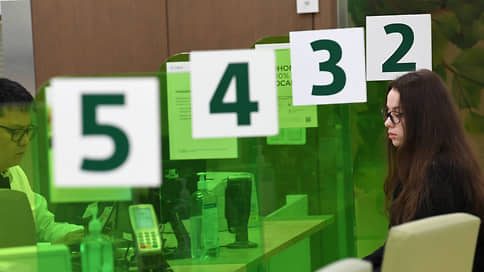Banks note an increase in demand for loans in the first week after an unscheduled increase in the key rate
[ad_1]

In the first week after the increase in the key rate of the Central Bank in the Russian market, there was a massive sale of retail loans at the old bank rates. Citizens who were close to the decision to take out a loan hurried to do so before loans became more expensive.
Bankers note an increase in demand for loans in the first week after an unscheduled increase in the key rate on August 15 (up to 12%).
As Kommersant was told in Sberbank, interest in consumer loans increased “within 10%.” In addition, a “noticeable increased growth” in mortgage applications was observed on August 15 itself.
Demand that day, according to the bank’s calculations, was 34% higher than the previous day.
Rates at the bank on ordinary mortgages have been increased by 2 percentage points (p.p.) since August 22.
At VTB, mortgages have risen in price by 2 percentage points since August 21, a week before that, demand for mortgages grew by 42% compared to the average daily rate: customers issued up to 40,000 applications, issued 16% more – 39 billion rubles.
Many major banks have raised mortgage rates. According to the monitoring data of Dom.RF JSC for the top 20 banks, mortgages have risen in price at Alfa-Bank, Otkritie, Gazprombank, Absolut Bank (by 2 percentage points under regular programs), as well as at Rosselkhozbank, Rosbank, Sovcombank, MCB, St. Petersburg and Uralsib (by 0.3–1.5 p.p.).
According to a Kommersant survey, an increased demand for loans in the first week after the growth of the key rate is also noted in other banks. For example, over the past week, according to the PSB, the population’s lending activity has increased by almost 10% in terms of the number of applications for consumer loans, and by 15% for mortgages.
People who had previously postponed large purchases “choose not to wait any longer”, expecting that rates in the banking market will rise after the key one, they admitted to the PSB.
Absolut-bank on market mortgages observed an increase in the percentage of access to a deal at previously approved rates, as well as an increase of 10% in applications for preferential programs due to a decrease in the rate by 0.3 p.p. growth in demand for preferential mortgages: under the program for new buildings – an increase of 3% in monetary terms compared to the previous week and by 7% in quantitative terms, for IT mortgages – an increase of 12% in monetary terms and by 5% in quantitative terms.
Elvira Nabiullina, head of the Central BankDecember 16, 2022:
“As for lending rates, they take into account risks, the maturity of the loan, the level of creditworthiness of the borrower, inflation expectations … When rates rise without raising the key rate, it means that they have changed under the influence of a risk premium.”
“In car loans, we can talk about a surge in demand over the past week due to the acceleration of those who have already received a decision on a car loan and wanted to be in time before the rate increase,” Mr. Kovalev added. Uralsib sees a similar trend in consumer loans: after raising the key rate, they issued “multiple more”. Sovcombank also records growth, but associates it with preparation for school.
A logical continuation of the current hype, experts call the decline in lending.
By the end of the year, we can expect a decrease in the volume of mortgage loans to a level of less than 450 billion rubles. per month (with an average monthly volume of 508 billion rubles this year), says Yury Belikov, Managing Director for Validation at Expert RA: “The response to the risks of a bubble in the mortgage market has been postponed for a long time, but they will work and have an effect.” Thus, since October, the second increase in macroprudential allowances for risky mortgages is expected in a year.
According to the expert, consumer lending will come under pressure in the coming months, not only due to the increase in the key rate, but also because of the growing risk premium, because “effective demand is drying up against the backdrop of debt load.”
The most positive forecasts from all retail segments, according to Mr. Belikov, could be realized in the car loan segment (see “Kommersant” dated June 26). However, even before the revision of market rates, “it would not be enough to compensate for the expected slowdown in the consumer and mortgage segments,” he said. And after the key rate increase, “car loans risk becoming the target for the most significant increase in the full cost,” as they turn around faster than mortgages and even some categories of consumer loans, the pace of early repayment of which “systemically slowed down.” Banks, the expert adds, can bet on car loans as a replacement asset to gradually equalize the profitability of the retail portfolio, but “the effectiveness of such a strategy will again rest on a reduction in effective demand.”
[ad_2]
Source link





